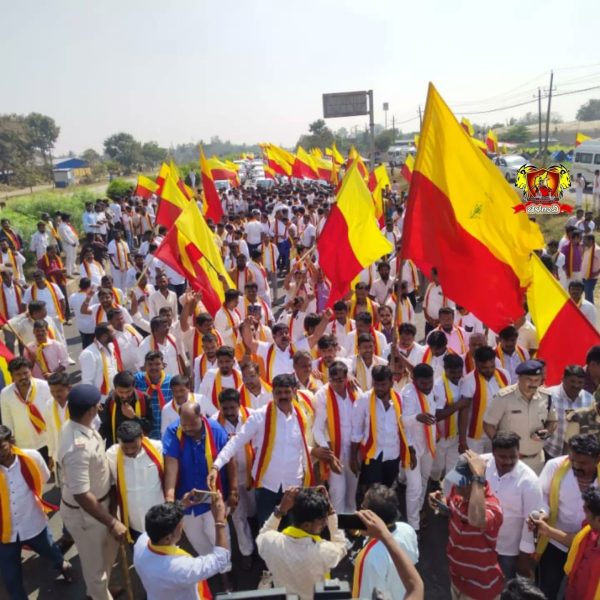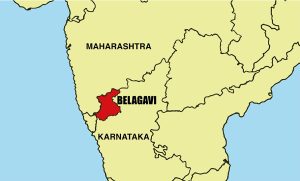
Law, politics, emotions: Karnataka-Maharashtra’s 8-decade Belagavi row
The dispute over some towns and villages in the Belagavi region has remained unresolved since the reorganisation of states in 1956 on linguistic basis; political parties have, over the years, cashed in on it

The BJP rules both Karnataka and Maharashtra, but apparently that is not enough for border peace between the neighbours. The Belagavi dispute has flared up again, and there has been simmering tension on both sides of the border over the past few days.
Both Kannada and Marathi supporters are taking the law into their hands, reportedly with political backing from either side. For both sets of people, it is an emotional issue, and the political dispute behind which dates back to the 1940s.
The beginning of the battle
In 1956, the states of India were reorganised on a linguistic basis. But that was not the start of the controversy.

Way before that, 1948, the Belgaum (as Belagavi was known then) municipality requested that the district, with its majority Marathi-speaking population, be included in the proposed Maharashtra state. Anticipating disputes, the Union government appointed the Justice Fazal Ali Commission in 1953 to fix the borders of the states. Based on its report, Parliament passed the State Reorganisation Act in 1956.
Also read: Simplified: Why are Maharashtra and Karnataka sparring over border?
On November 1, 1956, the state of Mysore was born, which was renamed Karnataka in 1973. Differences started between Karnataka and the neighbouring Bombay Presidency (later renamed Maharashtra).
Over a few years, Belgaum and 10 other talukas of the Bombay Presidency were made part of Mysore State. The border was a source of perennial angst, and the dispute over some towns and villages simply wouldn’t go.
Maharashtra started feeling that Belgaum, the north-western district of Karnataka, should become part of its own fold. Meanwhile, Karnataka, which lost its coastal area of Kasaragod to Kerala during the reorganisation of states, saw no reason to comply with Maharashtra’s demand.
This led to a decade of violent agitation which spurred the formation of the Maharashtra Ekikaran Samiti (MES), supported by the state government and the Shiv Sena. The MES still holds sway over some parts of the district.
In 2004, Maharashtra moved the Supreme Court to retrieve the territory, and the legal battle began in full earnest.
The Mahajan Commission
While forming the boundaries, the States Reorganisation Commission sought to include talukas with more than 50 per cent Kannada-speaking population in Mysore state. Those who opposed the inclusion of this region in Mysore state argued that there were more Marathi speakers than Kannadigas living there in 1956.
In September 1957, the Bombay state lodged a protest with the Centre. On October 25, 1966, the Union government set up a commission, headed by retired Supreme Court Justice Mehar Chand Mahajan. S Nijalingappa was the Chief Minister of Karnataka and VP Naik was the Chief Minister of Maharashtra at that time.
Also read: ‘Don’t visit Belagavi’: Bommai tells Maharashtra ministers amid raging border row
The report was expected to be a binding document for both states to end the dispute. The commission submitted its report in August 1967. It recommended the merger of 264 Karnataka towns and villages (including Nippani, Nandagad and Khanapur) with Maharashtra, and 247 Maharashtra villages (including South Solapur and Akkalkot) with Karnataka. The 52 villages that now want to be merged into Karnataka come under the Solapur and Akkalkot areas.
The report was presented in Parliament in 1970, but it was not taken up for discussion. Without the implementation of these recommendations, the demands continued to grow for Marathi-speaking areas to become part of Maharashtra and Kannada-speaking areas to become part of Karnataka.
The MES consistently won from the constituencies of the district, using it as an election issue in many parts of Belgaum for political polarisation in the border areas. Many people aligned themselves with parties, particularly Shiv Sena, on the basis of language. However, around 1999, the MES lost electorally and has not won a single seat in the border region since then.
The action in court
The border dispute is now in the court. In 2004, Maharashtra challenged the Supreme Court over the State Reorganisation Act. It demanded the merger of 865 villages and towns in five districts of Karnataka — Belgaum, Karwar, Vijayapura, Kalaburagi and Bidar — with itself.
Also read: Maharashtra-Karnataka border row: Declare Belagavi as Union Territory, says Sena
However, nearly two decades after its application, the dispute is still alive as the Supreme Court does not have the power to determine the boundaries of states. Karnataka invoked Article 3 of the Constitution to argue that only Parliament has the power to do so.
Maharashtra cited Article 131, which states that the Supreme Court has jurisdiction in cases involving disputes between the Central government and the states.
Belagavi Assembly session
In 2007, to assert its control over the region, Karnataka began building the Suvarna Vidhana Soudha in Belgaum on the eve of the golden jubilee of Karnataka Formation Day. The building was inaugurated in 2012. The annual winter legislative sessions have been held there since then.
Whenever the Assembly session of Karnataka is held in Belgaum, border issues come to the fore. Also, irrespective of who is ruling the two states, the powers-that-be always treat the issue emotionally as they fear facing the wrath of the people otherwise. Which explains why the BJP leadership has not been able to broker peace between its two governments on the west coast.


